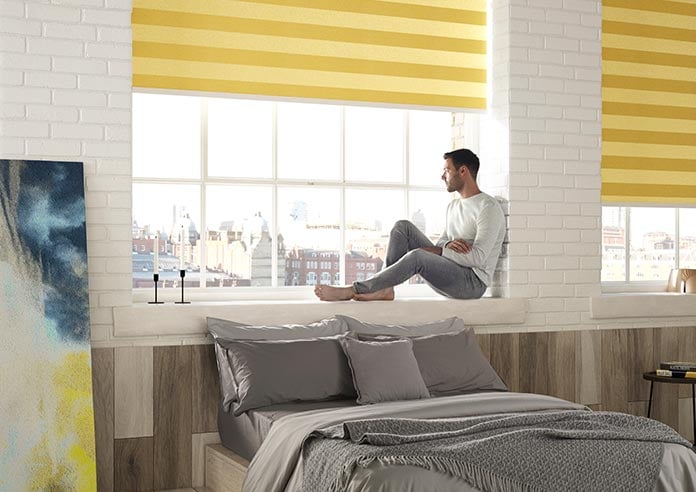Best Blinds for Bay Windows | Dress Bay Windows | 247 Blinds
TIPS
Posted 10/04/2024
Blessed with a home that has one of our favourite period features? If you're anything like us, you'll be wracking your brains to figure out how best to dress your bay windows. Luckily for you, we've got a whole host of ideas for the best blinds for bay windows, along with some helpful tips.
If you're not interested in the ins and outs of bays and already know which blind type you'd like, check out our handy guide on measuring bay windows for blinds!
Jump To:
- Bay window types.
- How to measure for angled bay windows?
- How to measure for square bay windows?
- What about uPVC windows & bow bay windows?
- The best blinds for each type of bay.
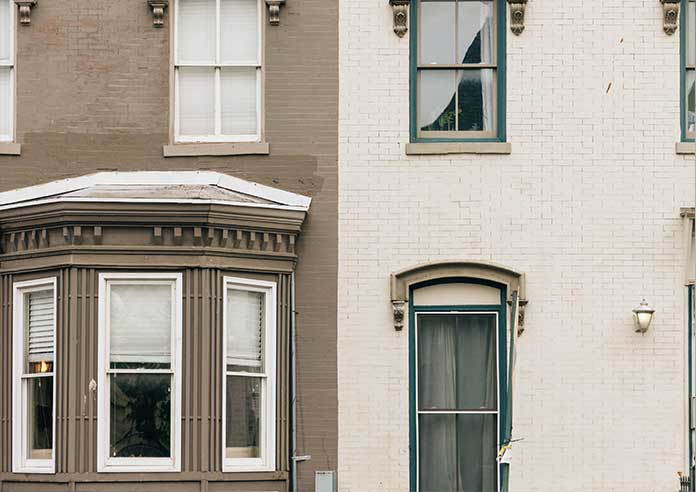

What to consider when measuring for blinds on each type of bay window
There are usually two main bay window types; angled bay window and square bay windows. However there are also uPVC bay windows and bay windows where you don’t have a sill or a ‘recess’ depth to play with, so we’ll cover those for you as well!
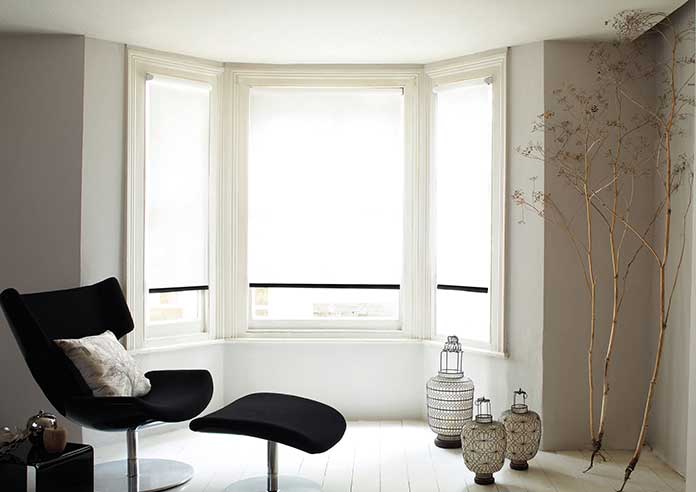
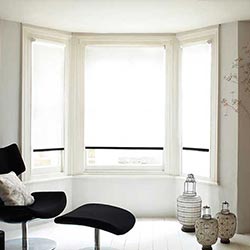
Measuring for an Angled Bay Window
The shape of an angled bay window can be traced back to the 17th and 18th century. Originally called an 'oriel', the three-pane window style was built using stone bricks, and could be found on the front of large town houses and terraced merchant houses. Reclining in the parlour, reading during the afternoon, and spying on the neighbours became a must for the eagle-eyed Victorian. Creating a fashionable compartment to sit or view out of, these bay windows are the more traditionally-styled of the two main types you'll find.
Though most angled bay windows will have three panes of glass, you can get variations with five panes or more, which creates a more rounded effect. No matter how many panes you have, measuring up angled bay windows requires the same method. When measuring for angled bay windows, the key thing to consider is the point at which your blinds will meet.
Depending on the joining angle AKA meeting point, the depth of the blind bracket, and the position in which you'll be fitting the blind both need to be considered when measuring up.
If there is some sectioning between each window via plaster columns or a wall panel, you can skip these steps and measure them the same way you would a standard recess window, as you don't have to worry about the blinds meeting on the corner.
If you don't have any sectioning, meaning the blinds will be 'jutting out' towards eachother, or fitted directly to the wall or ceiling, then follow our comprehensive bay window measuring guide. Check out the guide to see our super useful infographic, showing you the key points and the extra measurements you'll need. We'd always recommend that if you're unsure, just simply get in touch and ask for a set of brackets to help you figure out your measurements - we're always happy to help, even if you're not 100% sure on the blinds you'd like!
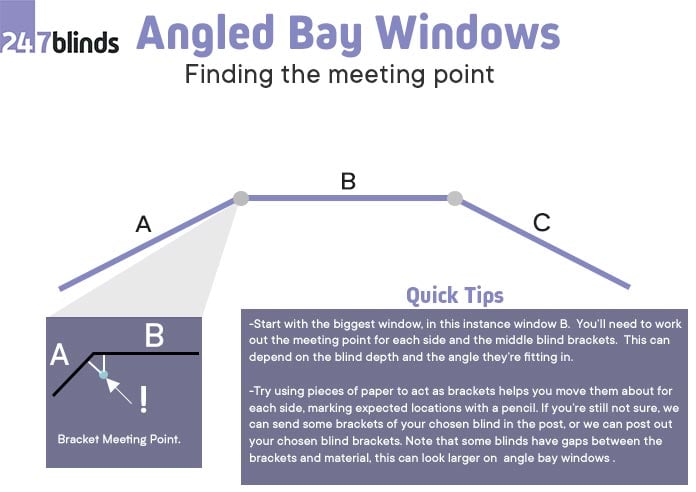

Quick Tips:
- Measure and cut pieces of paper to act as brackets to help visualise where your blinds will meet.
- Use a pencil or masking tape to mark everything up.
- Measure the largest window span first.
- Most importantly - double-check your measurements!
Measuring for Square Bay Windows
Also known as box bay windows, square bay windows came into use around the 1960s onwards. Square bays traditionally feature an inoperable, central 'picture' window, flanked by two smaller operable windows.
Generally, a box-style bay window is rectangular and has a small roof atop it. You can find this style on many new-builds in the UK, Europe and America.
The measuring for these can get a bit tricky, so we've made a helpful starter guide.
If you have a square bay window, the main thing to keep in mind is the angle of play you have to fit the blinds next to eachother is much smaller than with an angled bay window. You'll have to find a balance between having enough room to fit the blinds next to eachother, whilst maintaining coverage over the windows.
There are two ways you can do this:
- Have the brackets meet at equal points at a right angle - this way your blinds won't overlap, but you will be left with small gaps in either corner.
- Have the main blind (B) run the full length of the bay, and sit behind the other side windows (A + C) - this guarantees full coverage from all angles but means your 'main blind' will overlap the two on either side.
Much like the angled type, we suggest focusing on the biggest window as your main starting point, to ensure the best fit. Whether you want the brackets to meet each other, or have the blinds overlap, is down to your preference.
We find that aluminium or wooden blinds work best for a square bay window, rather than roller blinds where you will have gaps either side between the brackets and the fabric. Roman blinds can be another good option, but keep in mind the thicker material and lining needs space to gather when the blind is open.
If you'd still prefer a roller blind, try changing the mount type (the way the fabric rolls over the tube) from back to front, as this will help to close the gap.
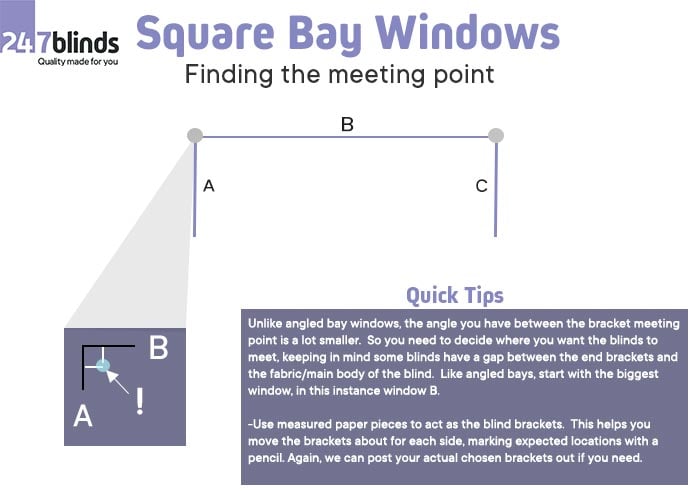

Quick Tips:
- Just like an angled bay window, the meeting point of the brackets is the most important aspect, so mark everything out with masking tape, pencils, and paper!
Measuring for Oriels and Bow Bay Windows
'Bow' bay windows and 'Oriel' bay windows are actually the same thing. Sometimes these types have more than the traditional three window panes. Numerous small windows create a circular, curved shape. Think mini castle turrets - French-style!
If you have this style of bay window (lucky you), you may find that the window panes are too small to fit a normal blind onto the window. In this case, your best bet might be a curved curtain rail, or a curved vertical blind (we don't carry these unfortunately). If you're set on your blind type, try getting in touch to see if we can make your chosen blind-type 'outside' the minimum sizes - it always pays off to double check!
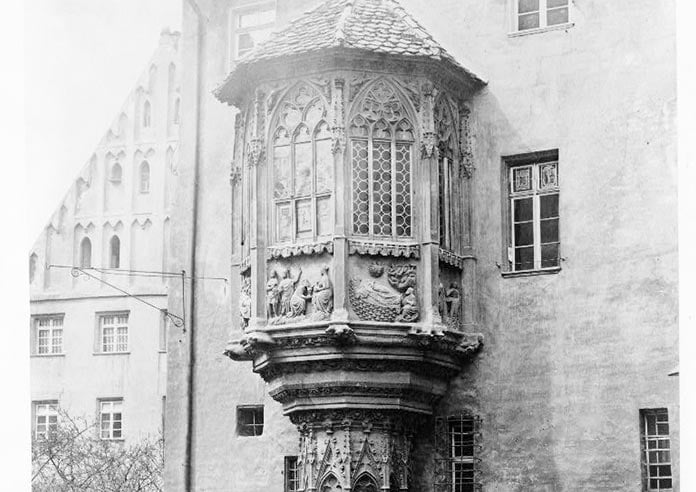

Image Source: Library of Congress - https://www.loc.gov/item/94512842/
The Best Blinds for Bay Windows
Wooden Venetian Blinds
Wooden Venetian blinds can be a super choice for bay windows, as they come in different slat widths: 35mm, 50m, and 63mm. With 50mm being the most popular.
As wooden blinds sit within box-end brackets, once the blinds are fitted next to eachother you'll be left with a minimal gap between them - perfect for bays!
Available in real wood and faux wood, with the faux wooden variation being waterproof and flame retardent, wooden blinds are a super smart option for your windows!
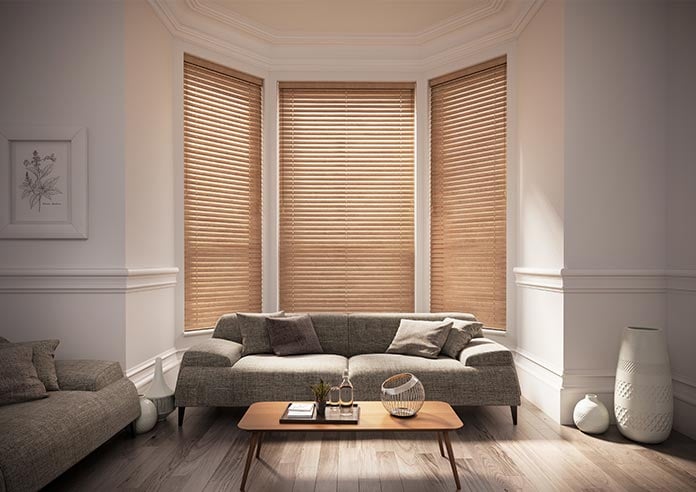
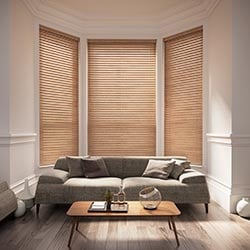
Shutter Blinds
Shutters can create a wonderful feature of your bay window. Available in a wide range of timeless colour tones, shutter blinds are available in various styles: cafe, full-height, and tier-on-tier.
Traditional doesn't have to mean costly! Follow our simple fitting guide to install these timeless window dressings yourself.
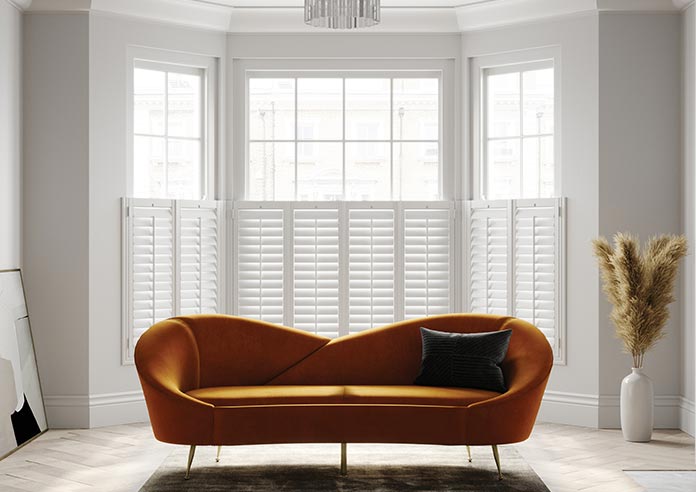
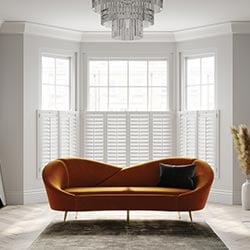
Aluminium Venetian Blinds
Rust-resistant, light, and durable aluminiumm Venetian blinds are a great option for bay windows, namely because they're available in narrow 16mm and 25mm slat sizes. Due to their small depth, you can fit them close together leaving a very small gap, making them the ideal choice for any tricky shapes or small window panels.
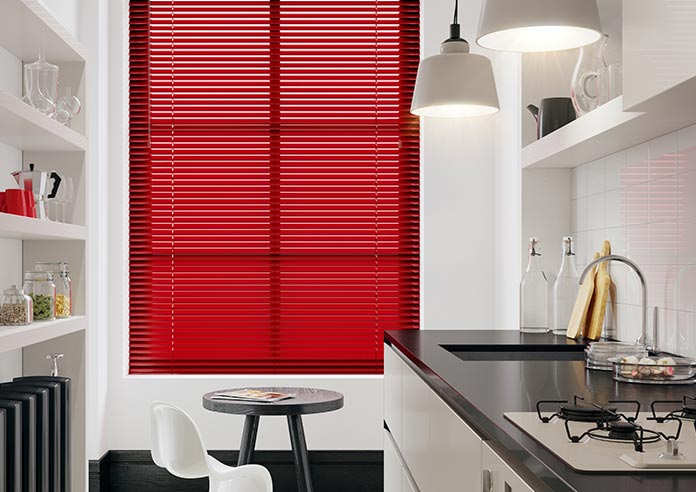
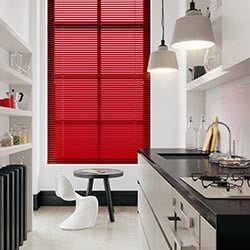
Roman Blinds
Roman blinds use fabric made from traditional woven textures, known as 'soft cloth', meaning these blinds offer the most range if you're after something insulating, appealing to the eye, and available in a wide range of colours and patterns.
As these blinds cover the headrail fully, the gap is minimal at the sides - great for pesky bay windows! However, do keep in mind that this blind type gathers (sometimes referred to as the stack-size) which is not everyone's cup of tea.
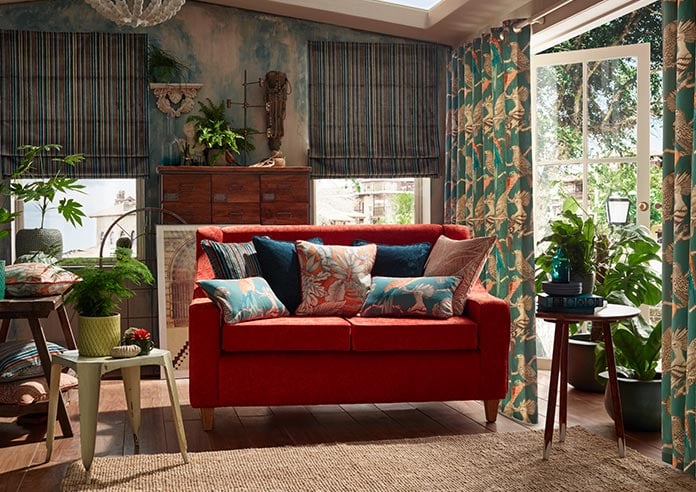
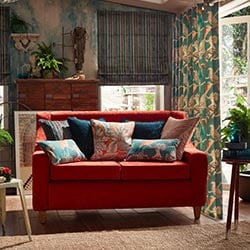
Roller Blinds
Roller blinds are simple and elegant, making them a popular choice. And because they're available in a wide array of colours, textures, and patterns they offer the most variety.
From minimalist whites, to rich royal blues, functional waterproofs to light-blocking blackouts, roller blinds can make for a stunning addition to your bay window, no matter what room they're in.
Just keep in mind that with roller blinds, there is a gap between the fabric and the end of the brackets of approximately 3.5cm. Due to this you might be left with bigger gaps between your blinds when fitting rollers in a bay window, but this can be minimised by having the fabric hang in front of the roller rather than behind it.
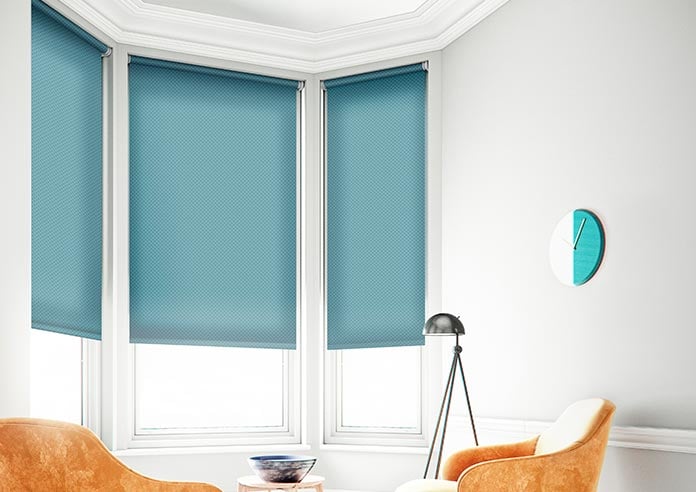
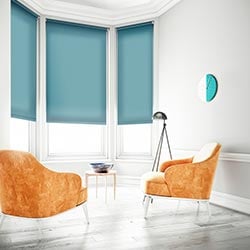
Curtains
Curtains, with their large range of colours and styles and customisable blackout and thermal lining options make a great choice for bay windows. Sometime's you'll see them on a curved rail like the image shown.
For bay windows, layer curtains over the top of blinds for added thermal insulation. You'll see your energy bills drop and the finished look will be oh-so-luxurious!
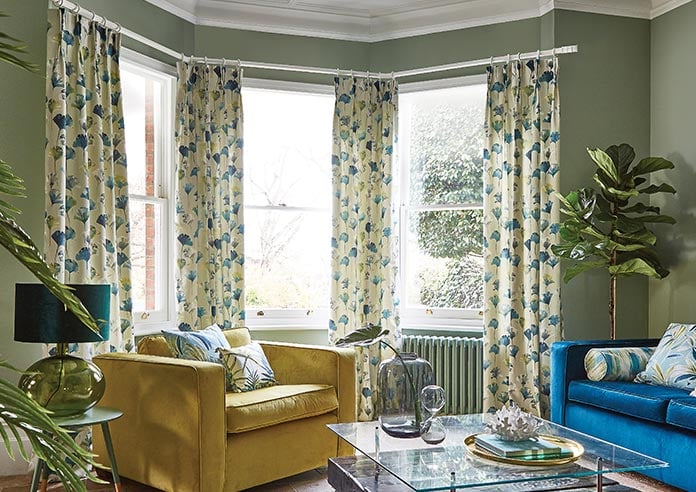
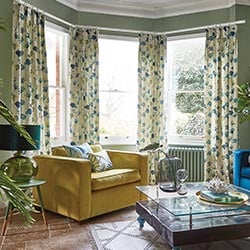
The Best Blinds for uPVC Bay Windows
Modern bay windows tend to be made of more modern materials, like plastic AKA uPVC, which means you'll likely have to be careful where you drill. This doesn't have to be an issue though as we have a range of no drill blinds, specially designed for these sorts of windows!
Perfect Fit Blinds simply clip into place using brackets that are slid under the window beading. These blinds are suitable for most uPVC and aluminium windows, the only thing you need to make sure of is that the window beading is malleable and would allow the brackets to be slid underneath. Most modern windows have this type of rubber as a sealant, however older uPVC windows may not.
Perfect Fit Shutters are a fuss-free alternative to our traditional shutters - simply clipping onto your window using brackets inserted under the beading. Perfect for tilt and turn windows these blinds allow you to maintain coverage over the glass whilst opening your window.
Clip Fit blinds are similar in that they use brackets that slip underneath the window beading and have useful side channels which make the blind secure and help reduce light bleed around the edges. Just like Perfect Fit blinds, you need the softer rubber type.
Stick Fit blinds are great for wooden frames and all other window types, Stick Fit blinds simply stick on to the glass of your windows as the name suggests! Availabe in blackout and thermal options as well as Venetian styles these versatile blinds are sure to brighten up any bay window!
Discover Bay Window Blinds at 247 Blinds
Now that you have an idea of the best ways to dress a bay window, it's up to you to explore. Once you start you'll soon find a dozen styles, patterns, and colours you want to add to your shortlist. Whittle it down to the final five, order some samples, and let your windows speak for themselves. Enjoy!




 Track My Order
Track My Order
 My Account
My Account
 Wishlist
Wishlist
 Call now
Call now
